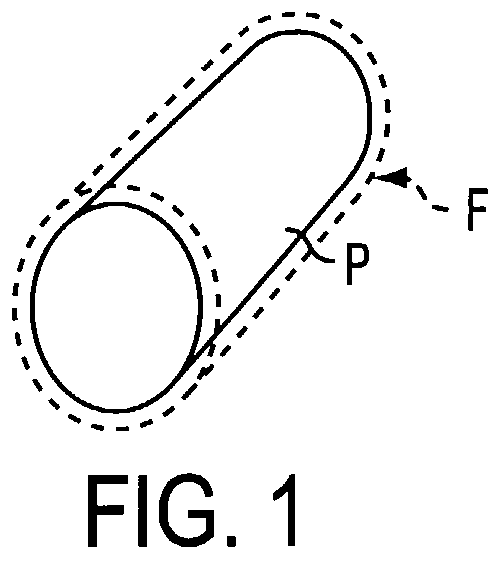Collagen membrane made from porcine skin
- Summary
- Abstract
- Description
- Claims
- Application Information
AI Technical Summary
Benefits of technology
Problems solved by technology
Method used
Image
Examples
example 1
Step I: (Defatting)
[0055]In a first step (following collection and freezing), the very fatty rinds are defatted. This defatting step is preferably carried out enzymatically with the help of wetting agents (e.g., detergents). Preferably lipases are used to hydrolyze natural fat between the collagen fibers. In addition, proteases are preferably used to support this action (i.e., to provide a more uniform defatting). In addition, a surfactant is preferably used to emulsify the released fatty acids. The combination of chemical and biochemical agents in this first step, and the advantages therefrom, were not previously contemplated in the field of preparing edible foils or films.
[0056]In a specific non-limiting example, this defatting can be carried out as follows (i.e., it should be understood that this is an exemplary embodiment and can be varied by those in the art depending on circumstances as appropriate (most preferable values in parenthesis):
[0057]
Temperature: 10–35° C. (30° C.)pH...
example 2
Step I: (Pretreatment)
[0129]In a first step the rinds are washed with a surfactant.
[0130]In a specific non-limiting example, this pretreatment can be carried out as follows (i.e., it should be understood that this is an exemplary embodiment and can be varied by those in the art depending on circumstances as appropriate (most preferable values in parenthesis):
[0131]
Temperature: 10–25° C. (20° C.)(i)Place the following into the mixerRinds 100%Water 50–200%(100%)Surfactant0.2–3% (1%)(ii)Treatment time in the mixer:30 min.–4 h(1 hour)(iii)Rinse:Drain the water and dissolved chemicals from the mixer.
Step II: (Alkalinic Treatment / Dehairing (i.e., the Removal of the Porcine Bristles))
[0132]In a second step, hair (e.g., roots within the skin) is removed from the porcine rinds. The presence of this hair is a problem particular to porcine skins. In this “hair-removal” step, a combination of chemicals, which preferably includes sodium sulfide, is used to dissolve this undesired hair or bristle...
PUM
| Property | Measurement | Unit |
|---|---|---|
| Fraction | aaaaa | aaaaa |
| Thickness | aaaaa | aaaaa |
| Temperature | aaaaa | aaaaa |
Abstract
Description
Claims
Application Information
 Login to View More
Login to View More - R&D
- Intellectual Property
- Life Sciences
- Materials
- Tech Scout
- Unparalleled Data Quality
- Higher Quality Content
- 60% Fewer Hallucinations
Browse by: Latest US Patents, China's latest patents, Technical Efficacy Thesaurus, Application Domain, Technology Topic, Popular Technical Reports.
© 2025 PatSnap. All rights reserved.Legal|Privacy policy|Modern Slavery Act Transparency Statement|Sitemap|About US| Contact US: help@patsnap.com

